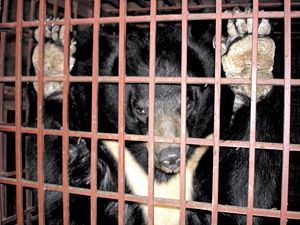Whether you accept it, avoid it or live somewhere in between, insurance coverage has become a defining issue for our profession. Patients increasingly expect to use their benefits, practitioners want to be compensated fairly for their time and expertise, and the system itself remains – at best – fragmented. The encouraging news is that coverage has expanded in meaningful ways. The challenging news is that reimbursement, across the board, remains inadequate.
News in Brief
ACTCM President Featured on CNN report
Lixin Huang, MS, president of San Francisco's American College of Traditional Chinese Medicine (ACTCM), was recently featured in a CNN report, "Animals in Chinese Medicine," exposing the illegal trade in animal parts for traditional Chinese medicine. The report, which first aired Jan. 10, 2010, examined the ongoing harvesting of bile from bear gall bladders, as well as tiger bone and rhinoceros horn.
At the 1:52 mark on the video (available on the ACTCM Web site at www.actcm.edu), reporter Emily Chang discusses the ongoing effort of Huang and ACTCM to bring together conservationists and TCM practitioners to educate about illegal animal trade and find alternative products. In the interview with Chang, Huang noted that if these endangered animals are not protected, Chinese medicine will "lose its natural resources" and credibility.
In a 2007 interview with Acupuncture Today regarding tiger conservation, Huang stated, "Traditional Chinese medicine needs to have a strong voice for wildlife conservation, such as wild tigers. It's a win-win for both people and the tigers. We promote healthy people and a healthy planet to create harmony."

While there has been a ban on tiger trade in place in China since 1993, the government is under increasing pressure to lift the ban. According to the Save the Tigers Fund, there are now only five species of tigers left in the world and fewer than 5,000 wild tigers left in the world. The animals are mainly harvested for their bones, which are ground into a fine powder. Tiger bone is thought to enhance male virility, and has appeared in wines and shampoos, as well as the traditional herbal formulations.
Unfortunately, the moon bear has not fared as well. According to the World Society for the Protection of Animals, there are an estimated 12,000 bears in captivity in China, Korea and Vietnam. The animals are often placed in very small cages and have steel tubes inserted into their stomachs to harvest the bile, thought to help with several disorders, including eye diseases.
According to the CNN report, the TCM industry in China is worth $30 billion, certainly a hefty incentive for poachers to continue to hunt and kill these animals. Huang hopes that the efforts of ACTCM and other conservationists will help stem the tide of illegal trade in animal parts.


